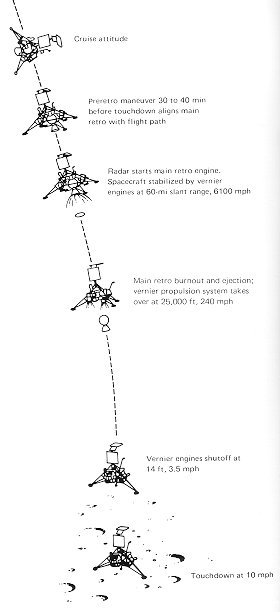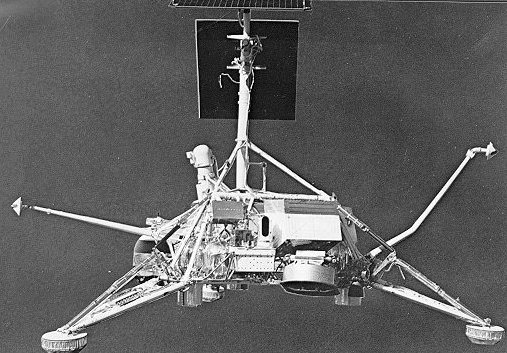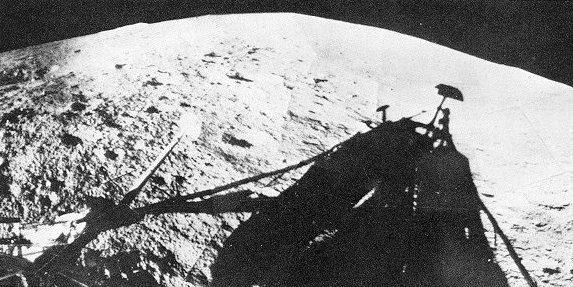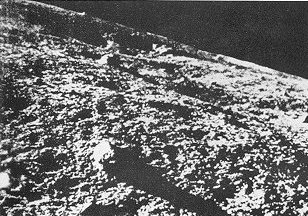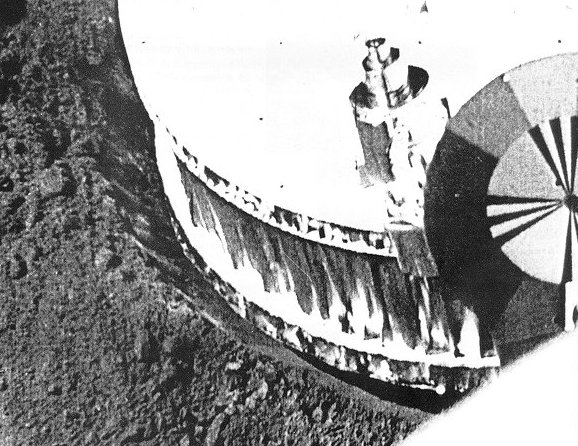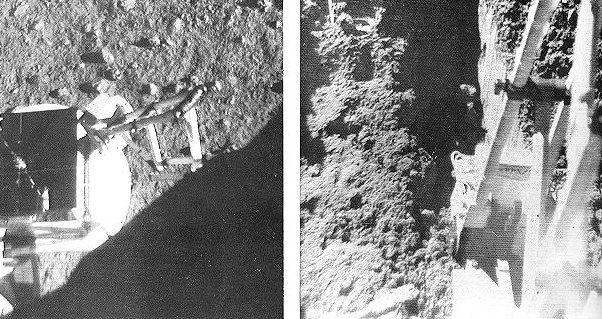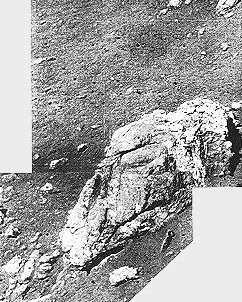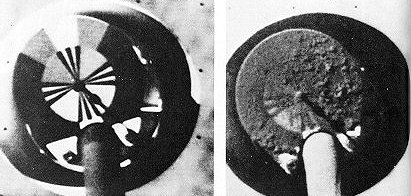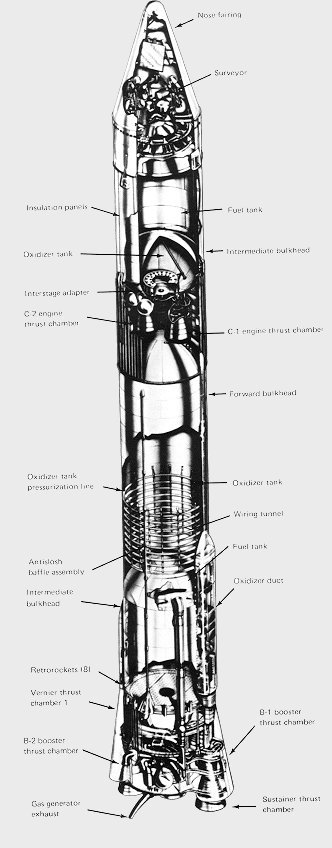
| The Surveyor mission had been conceived in 1959 as a scheme to soft-land scientific instruments an the Moon's surface. It was a highly ambitious plan that required both development of a radical new launch vehicle and the new technology of a closed-loop, radar-controlled automated landing. The cutaway drawing shows the Atlas-Centaur launch vehicle. The Atlas-Centaur, a major step forward in rocket propulsion, was the first launch vehicle to use the high-energy propellant combination of hydrogen and oxygen. Its new Centaur upper stage, built by General Dynamics, had two Pratt & Whitney RL-10 engines of 15,000-lb thrust each. The first stage was a modified Atlas D having enlarged tanks and increased thrust. |
